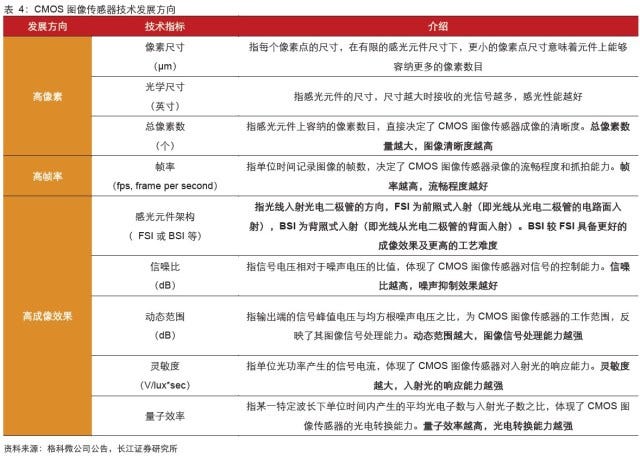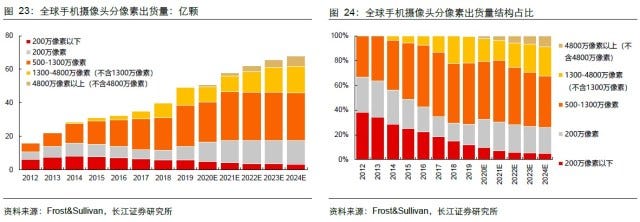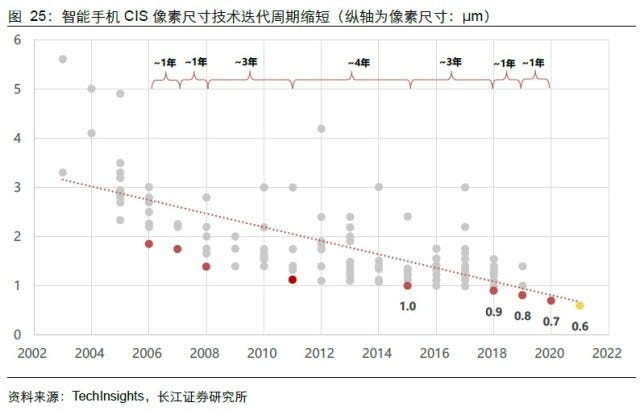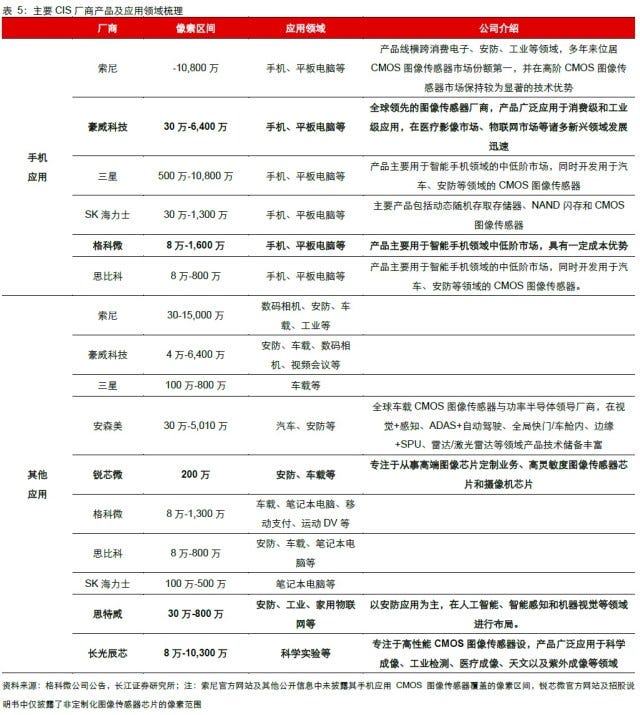Nowadays, the improvement of smartphone image effects highly depends on the technological innovation and upgrade of CMOS image sensors. Even if it can leverage the later algorithms to save a large amount of optical information of the original image to the maximum extent, it is of great benefit to enhance the tolerance of post-processing. The current 3 major upgrade directions for CMOS images are high pixels, high frame rate and high imaging effects, covering many technical indicators such as pixel size, CIS size, number of pixels, architecture, quantum efficiency, sensitivity, etc. (Changjiang Securities report)

The camera’s pixels have been upgraded from 8MP to 12MP, and smartphone photography has entered the era of high definition. With the continuous innovation of the leading brands in the Android camp, the flagship smartphone has entered a new stage of ultra-clear shooting. In 2019, high-end flagship phones will use the 48MP rear main camera as one of the main selling points. In 2020, brands such as Samsung and Xiaomi will continue to use billion-level pixels as a marketing selling-points. From the perspective of changes in the pixel structure of global phone lenses, the proportion of low-pixel ranges has dropped significantly, while the penetration rate of products in the high-pixel range has gradually increased. In addition, the ceiling of pixel specifications has been continuously broken. (Changjiang Securities report)

With smartphones, the increase in the number of pixels will inevitably bring about an increase in the size of the CIS chip, so it is urgent to reduce the size of a single pixel, which has formed an industry technology development trend. In the early years, the pixel size was rapidly reduced from 2.0μm to 1.7μm, and the technology iteration was fast. Micron was the leader of the industry’s technology development. Since 2010, benefiting from the advent of back-illuminated (BSI) CIS technology, CIS manufacturers represented by Sony have upgraded their product specifications from 1.4μm to 1.1μm, realizing the upgrade of smartphone main camera to 8MP. From 2011 to 2018, due to the decrease in the sensitivity of individual pixels and the crosstalk problem between pixels, the pixel size reduction speed has slowed down. Samsung used DTI (Deep Trench Isolation) technology to reduce the crosstalk problem between pixels and launched 1.0μm technology products. Since 2018, with the advent of the QUAD pixel structure, the CIS pixel size has shrunk and the arms race has accelerated, and the industry has maintained the pace of upgrading every year. Samsung is not tired of small pixel technology. (Changjiang Securities report)

Changjiang Securities consolidates the current main CIS vendors. (Changjiang Securities report)
